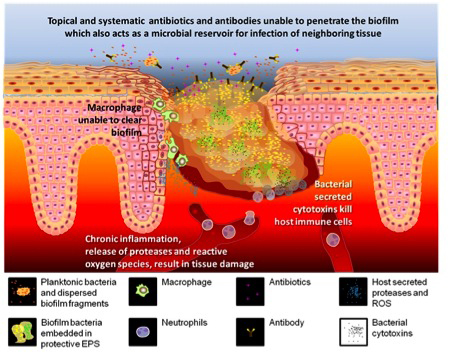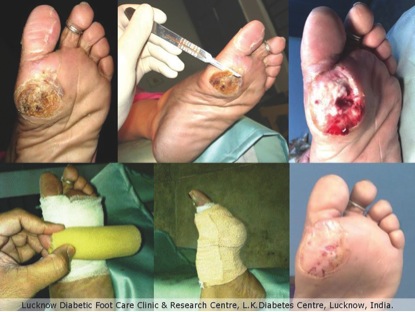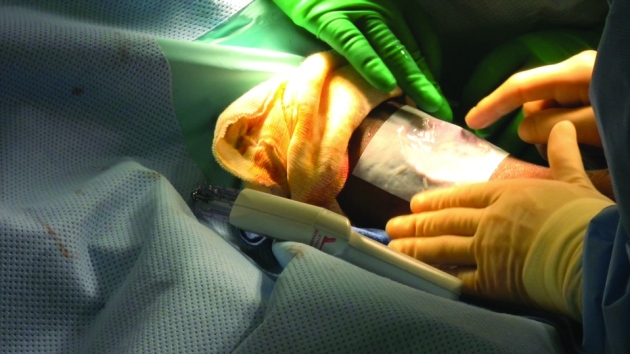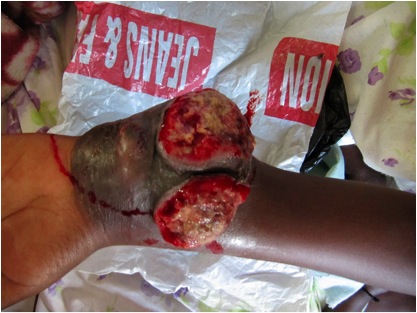woundsinternational
Just another WordPress.com site
Category Archives: Complex wounds
Travel sickness
Many Western clinicians visit developing nations to gain valuable healthcare experience, but what they find there can often be a shocking litany of trauma wounds and services blighted by poverty.
We’ve all been there. Your friends say you have to visit a place as it is really beautiful, but when you get there it is actually a little bit disappointing. It’s the travel version of seeing a poor Hollywood remake of your favourite childhood book. It happened to me in Venice. ‘Arrive by the canal,’ I was told, ‘it’s the most romantic sight in the world.’ In reality the water smelled of drains and I was ripped off by a distinctly non-Italian gondolier. Lesson learnt.
This weekend I was in another city fabled for it’s beauty, this time the dreaming spires of Oxford, England, but rather than taking in the sights, I was attending a wound care symposium that soon disabused me of the notion that everybody travels for pleasure. It turns out that in fact, some people actually seek out danger, poverty and trauma in an effort to take their expertise to those who do not have access to adequate healthcare services.
St Anne’s College was hosting a one-day symposium entitled ‘Managing acute and chronic wounds following major catastrophes in Haiti and Africa’, which focused on the response to the disastrous earthquake that struck Haiti in January 2010 and the ongoing difficulties of providing wound care in parts of Africa. Many of the experiences I listened to were not only genuinely shocking and insightful, but also provided a stark contrast with my own expectations of foreign travel.
The Gift of Pain
One of the speakers, Professor Andrew Boulton, gave a talk on the practical approaches to prevention and treatment of diabetic foot ulcers in developing countries, where he described type 2 diabetes mellitus as a 21st century epidemic, with perhaps 100 million sufferers in China and a similar number in India alone. I had read about the dangers of neuropathy and injuries due to lack of sensation in people with diabetic foot or leprosy, but Professor Boulton gave a graphic presentation of the problems faced by these people in India. I must confess I had never regarded pain as a gift, but as Professor Boulton explained, it is only pain that alerts us to tissue damage — unlike the people he saw in an Indian clinic whose living conditions were so harsh that there feet were regularly gnawed upon by rats at night, leaving them with terrible wounds.
Acid test
In one of the afternoon sessions, Marc Swan, a reconstructive plastic surgeon, discussed his experiences in East Africa, where poor healthcare resources mean that certain conditions such as cleft palate, that are eminently treatable with the right equipment, can have devastating consequences for infants’ chances of survival and can cause them to be shunned by their community. There were also examples of how poverty can have a devastating effect on people’s lives, such as the women who had been horribly disfigured by having battery acid hurled into their faces by jilted or jealous partners, accidents from crude farming incidents and extensive trauma wounds due to the prevalence of drink driving and the lack of seatbelts in cars. All of these wounds presented unique challenges to a Western surgeon used to having access to the best equipment and supplies.
On a more positive note, Mr Swan did highlight that the lack of basic equipment often drives people to improvise in surprising ways, for example, negative pressure dressings made from furniture foam and cling film and skin grafts being attached with superglue.
He also noted that in East Africa, the lack of healthcare staff means that each patient is accompanied by a family member or friend who caters for all their physical needs, such as washing, dressing changes and feeding, while they are in hospital.
Even though I didn’t manage to hop onto one of the ubiquitous open-top busses that circle the city, the speakers made sure that my day out in Oxford was still a worthwhile trip. I may have missed a lot of the sights, but I gained a unique insight into how difficult in can be to apply wound care in countries blighted by poverty and disease. I also, to my shame, learnt that there are more pressing concerns around the world than the price of a gondolier trip.
Launch of virtual conference
For further insights into how clinicians manage different healthcare situations in their own practice, log on to Wounds International on 13 April. We will be launching our online conference with free access to much of the content from our successful international event in Cape Town in February. This will provide access to clinical presentations, made easy workshops, posters and free papers, as well as a virtual exhibition.
This is a fantastic opportunity to take part in the conference and to share the resources online with your colleagues.
Other resources:
The diabetic foot in sub-Saharan Africa: A new management paradigm
The challenge of managing burn wounds in Uganda
Jason Beckford-Ball from the Wounds International HQ in London.
These shoes are made for walking
I’ve always thought it is possible to measure a society’s slide into wealthy excess by the way it turns everyday items into luxuries. A stroll through one of the fashionable department stores in New York, Paris or Buenos Aires would reveal a host of examples — kitchen accessories that resemble hand-held modernist sculptures, food that takes longer to unpack than it would to hunt and wall-mounted fireplaces whose primary function is to look delightful rather than cast any heat.
Perhaps the most obvious example is the humble shoe. In the West, the female shoe in particular has developed from something that protects our feet to a fashion accessory, available in every imaginable colour and style and able to impart a heady mixture of sex appeal and social status.
As a man who has little interest in shoes (I have two types — brown and black), even I know that a Manolo Blahnik is not a complicated Russian vodka cocktail, but rather a world famous shoe designer whose creations fetch incredible sums. Is it me or does it seem that with an estimated 1.4 billion people around the world living in poverty, something has gone a little awry?
The one-dollar sandle
Of course in many countries around the world people often go barefoot and a simple pair of rubber flip-flops is a luxury. The same economic realities apply to healthcare equipment in general and wound care supplies in particular, with the majority of people in the world having little access to simple medicines, let alone sophisticated wound care treatment such as negative pressure, antimicrobial dressings or compression hosiery.
But as someone famous once said, ‘Necessity is the mother of invention,’ and harsh conditions can often forge innovative solutions such as the particularly ground-breaking answer to the problem of diabetic foot ulcers developed by a team of doctors in India.
The forefoot plantar region is the most common location of diabetic foot ulcers and offloading body weight to reduce pressure is vital in the management of these lesions. Offloading methods include crutch-assisted walking, therapeutic shoe and custom splints. However, due to economics, these methods are not often available in the developing world. To provide a simple method of offloading, the team developed the Samadhan System (the Hindi word ‘samadhan’ means ‘solution’), which uses a rolled up piece of foam, some adhesive and a piece of elastocrepe bandage. This is worn inside the patient’s sandals and offloads the weight of their body from the affected section of the foot.
The system costs around $1 per patient, does not require special training and can be adapted for people of different body weights, allowing them to walk with a relatively normal gait wearing buckled sandals.
This kind of innovation was particularly evident at the recent Wounds International conference in Cape Town, where speakers from different continents presented ways in which they had adapted available resources in the absence of expensive equipment, offering solutions that are both cheaper and effective. As David Keast, a Canadian wound care specialist from the World Alliance of Wound and Lymphoedema Care, said: ‘The conference has a different focus, with presentations from areas with limited resources, which we don’t usually see.’
Despite all of the expensive wound care treatments that have been developed recently and the plethora of research into the best way to manage certain types of wounds, developments like the $1 dollar sandal show that sometimes it is the simple things that actually work the best.
Or to use another cliché, if the shoe fits….
For more inforation, see:
Innovative approaches for improving diabetic foot care in India.
It’s wound care, Jim, but not as we know it…
I’ve never been a particular fan of science fiction as a genre. While I can appreciate the appeal of creating a world where you can fly to the shops or be eviscerated by killer aliens (depending on your outlook), it all seems a little bit speculative. Sure I’d like the benefits of X-ray vision and being able to eat all my meals in pill form, but as it’s never going to happen, I can’t see the point of entertaining it.
That’s why I find it all the more unsettling when some of the stuff that they dream up in the movies actually gets invented, such as a global communication system that relies on the speedy transfer of electronic data, or the technology to potentially transplant pig hearts into humans.
It begs the question, what are they going to invent next — a hoover with a ball instead of wheels? Preposterous. Skin substitutes that can generate new tissue? Never.
Oh, hang on….
Of all the recent advances in wound healing it is the development of tissue engineered collagen scaffolds using human or animal tissue, also less scientifically known as skin substitutes, that I find the most bizarre — unsettling even. At the same time I can see that they have enormous potential to launch wound care into an entirely new direction and vastly expand the range of treatment options.
But how scary are they in reality?
These tissue engineered scaffolds are designed to stimulate or replace the body’s own extra-cellular matrix (ECM), which plays an important role in skin tissue regeneration and is the major component of the dermal skin layer. As well as providing a structural support for cells, the ECM also creates a reservoir of active molecules that can be rapidly mobilised following injury to stimulate cell proliferation and migration.
The last few years have seen a wide range of products enter the market. These include acellular matrices, which have had all the cells removed from the native collagen matrix during manufacture or are naturally absent. Products derived from animal sources (xenografts) are developed by harvesting living tissue (e.g. dermis, small intestine submucosa, pericardium, etc) from donor animals such as pigs, horses or cows. Products derived from human sources, i.e. donated human cadaver skin (allografts), undergo various processes to remove the cells and deactivate or destroy any pathogens. It is thought the removal of viable cells helps to prevent an adverse reaction by the host.
It may all sound like science fiction, but the important question is, does it actually work? So far, evidence suggests that when placed in the wound bed, the matrix can provide a temporary scaffold or support into which cells can migrate and proliferate, leading to tissue regeneration and ultimately wound closure. It seems that, especially in burns and chronic wounds, these products can have a significant effect.
However, the development of these technologies, derived as they are from animal and human sources, means that inevitably there will be religious and ethical concerns, such as the transmission of Prion diseases, the use of animals or the potential for the use of tissue derived from neonates. While it is important that companies are able to develop new and revolutionary products, this demonstrates why we also need healthy regulation.
After taking all of these elements into account, the possibilities of this kind of technology to help patients with wounds is enormous. It may not yet be the equivalent of the sick bay on the Starship Enterprise, where injuries were zapped away with a wave of Dr McCoy’s hand, but if this sort of advance can help to heal extensive burn wounds, for example, then we have to explore it.
So, now that we’ve cleared that up, I’m off down to the shops on my transportable jet pack. Who’s with me?
Find out more:
Acellular matrices for the treatment of wounds
Advances in tissue-engineered skin substitutes
Jason Beckford-Ball from Wounds International HQ, London
A shock to the system
I’m not ashamed to admit that, while obviously tragic, the coverage from the recent earthquake in Christchurch, New Zealand, left me feeling confused. It wasn’t the sight of buildings collapsing like CGI skyscrapers in a Hollywood disaster movie, or even the awful pictures of firemen and ambulance crews trying to dig people out from piles of rubble. After all, we’ve witnessed similar scenes in Haiti and India in recent years, with much higher death tolls and more widespread devastation.
What unnerved me was that for once disaster had befallen a modern city in a developed country. As well as the fact that most of the terrified faces flashing across my TV screen were white, they also belonged to people who were well-dressed, amply fed and often talking to worried relatives on mobile phones. TV crews were on the spot almost immediately and there was a swift response from well-equipped emergency services.
None of this in any way diminishes the suffering involved, but I do have to admit that it made me realise how complacent I have become about disasters in developing countries, as if they are almost normal and to be expected.
The same could be said of the West’s view of healthcare in general. In recent years Western media has been flooded with reports of soaring HIV rates in parts of Africa, avian-flu in south-east Asia and cholera in India to such an extent that it is easy to become desensitised. The pure scale of health problems in some parts of the world can also make it feel that any help we can provide as individuals is not going to make any difference.
That does not stop some people trying though. Wounds International recently featured an article on a group of doctors who travelled from the UK to rural south western Uganda to help with the treatment of surgical wounds (Read Treating surgical wounds in rural south western Uganda by clicking here). They found patients whose recovery was often impaired by severe malnutrition, poor sterile conditions such as twin theatre tables where patients were operated on at the same time, and a lack of basic equipment, which meant, for example, that surgical gowns had to be continuously reused.
Even once they had been operated on, the patients were still not entirely out of the woods. Cultures of wound swabs were very hard to come by and clinicians used educated guesswork when it came to prescribing the limited amount of antibiotics they had available. There was also a general lack of awareness of asepsis and basic wound management, with patients’ relatives performing all of the non-surgical care in the hospital. If that was not enough, there was the ever-present threat of malaria.

In the absence of adequate medical equipment, unusual solutions have to be found, such as these tension sutures fashioned from urinary catheter tubing. The drain was made from the finger of a glove.
As I watched the recent events in Christchurch unfold, I realised that, like the patients in Uganda, many people across the globe do not have to wait for the earth to crack under their feet before they experience a disaster — they deal with health epidemics and the threat of death and disease on a daily basis without any proper treatment or even basics like clean water and medicine.
The recent Wounds International conference in South Africa brought together clinicians from around the world to reflect on what works in some communities and not others. This helped to put delegates own practice into perspective and demonstrated how we can all learn from one another.
Ultimately, the challenges of providing effective health care globally will always be hampered by poverty and public health education. However, rather than sitting and watching epidemics unfold on the TV news, perhaps we in the West could do more to spread our expertise to those in less fortunate parts of the world.
From Jason Beckford-Ball in the Wounds International HQ, London.
Wounds International 2011, Cape Town, SA
This major event will bring the global wound care community together to addres s local and international challenges in delivering high quality wound management worldwide.Register now online.
Wounds International is holding its first international wound care conference in Cape Town in February 2011, working in partnership with UBUNTU Wound Healing, WHASA (Wound Healing Association of Southern Africa), WAWLC (World Alliance of Wound and Lymphedema Care) and the WUWHS (World Union of Wound Healing Societies).
This conference aims to improve the provision of wound management services for patients worldwide, using tools that can inform practice, and help educate all those who attend through the sharing of clinical experiences. By highlighting variations in practice across different countries, the conference will identify the main challenges to delivering effective wound care globally and present a plan to begin to address the issues.
The programme reflects this sharing of knowledge and will provide real-life examples from different clinical settings.
International speakers include John MacDonald (US), Gary Sibbald (Canada), Gregory Weir (SA), Geoff Sussmann (Australia), Keith Harding (UK), Kshitij and Lakshmi K Shankhdhar (India), Xiaobing Fu (China), Bishara Atiyeh (Middle East) and other key experts from around the world.
In addition, interactive ‘made easy’ sessions will focus on:
- Wound Assessment and Diagnosis
- Impact of Environment and Lack of Resources
- Management of Wound Exudate
- Identifying and Managing Wound Infection
- Setting up a Wound Clinic
- Management of Lower Limb Oedema
- Offloading the Diabetic Foot
These sessions will involve interactive debate and hands-on experience, offering delegates the chance to ask questions and take home practical examples for use in their day-to-day work.
There will also be free paper sessions and poster presentations, selected from the wide range of abstracts submitted.
Click here for the latest Conference programme
The conference will bring together a wide range of stakeholders, including those in government and policy makers.
See our website for more information







